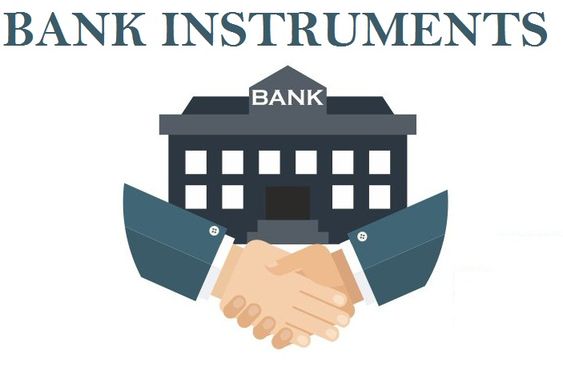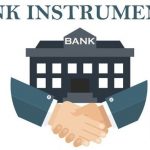How The Leased Bank And Instrument Works: An In-Depth Explanation
goldandlandsadmin November 4, 2022 No Comments

Many wonder about the various instruments available to financial service companies like banks and other lending institutions. One of the instruments that many people ask about is the leased bank and instrument.
This instrument works similarly to an asset-based lending transaction, but it has unique aspects that make it stand apart from these other types of transactions. The following article will explain how this instrument works and how it can help you achieve your financial goals.
Introduction
The leased bank and instrument is an uncommon type of financing available to many small and medium size companies. This type of financing has been developed in recent years due to changes in the economic environment, which have made traditional forms of financing difficult to come by. These loans are also referred to as rental or purchase/leaseback loans.
They work like any other lease agreement; with the owner (borrower) turning over ownership of their company’s assets to a lessor who then rents it back for a period of time. What makes these agreements different from other leases is that instead of being paid monthly, the lessor pays out the total cost at one time at an interest rate set up prior to signing on with this type of loan.
What Is a Leased Bank?
A leased bank is a financial instrument that allows a party to borrow money or other assets from another party with the use of collateral. When the borrower defaults on their payments, the lender will then reclaim their assets from the borrower.
There are two types of leases in banking – short-term and long-term. Short term leases have the duration of 1 day to 3 years whereas long-term leases are usually indefinite. Short-term leases are typically less expensive than long-term leases because they require less capital for security purposes.
The interest rates for both types of leases depend on credit ratings, borrowing history and reputation as well as transaction size and type. Leases are used in every industry imaginable; however, they can also be considered high risk investments due to the higher potential for default by the borrowers.
What Is an Instrument
An instrument is a vehicle to transfer ownership of an asset from one person to another. There are many different types of instruments, each with its own unique set of benefits and drawbacks. Instruments often come in the form of contracts and agreements, which can be both verbal or written. For example, in a case where two parties wish to exchange goods for money, they could either sign an agreement or use cash as an instrument.
Read Also: What Are Bank Instruments?
When using cash as an instrument, the purchaser hands over a certain amount of cash to the seller at the time of purchase. In this way, no contract is necessary because there’s already a predetermined value between what’s being exchanged.
Similarly, when using a credit card as an instrument, the buyer will hand over their card to the seller who then enters their credit card information into the system. Once this information has been entered into the system by scanning it or manually typing it in on the keypad, the funds are then transferred from that account to the account of whichever merchant is selected by them.
Bank Endorsed Cheque
A bank endorsed cheque is a cheque that has been endorsed with the stamp of a bank on it. This type of endorsement helps to validate the authenticity of the cheque and ensures that it will be honored by the bank.
In order to endorse a cheque, you must have an account at the bank where you would like to deposit your funds. You can do this yourself or ask someone with an account at that bank to endorse your cheques for you.
There are two types of endorsements that can be applied to a cheque. They are as follows: Blanket Endorsement: The person endorsing the cheque uses their own signature and information (name, address, account number) as well as information from the back of the cheque in order to verify its validity.
Blanket endorsers also ensure that they have enough funds in their accounts before signing off on any transaction. Additionally, they make sure that there are not other transactions coming out of their account later on in the day which might cause overdrafts.
Finally, they also add their initials next to the bank stamp so that anyone who handles the cheque knows who endorsed it. Individual Endorsement: The individual endorsing a cheque puts only their signature on it without any additional information such as name, address or account number.
Bank Guarantee (BG)
A BG is a guarantee from a financial institution that it will, in the event of insolvency, provide adequate funds to meet all obligations to depositors and other creditors. A BG may be issued by the government or by an international bank such as the World Bank.
However, while governments are seen as more trustworthy than private banks because they are backed by the full faith and credit of their country’s taxing power, there is no guarantee that a given country’s government won’t default on its bonds.
Furthermore, for countries with high national debt levels (such as Greece) not issuing sovereign guarantees poses significant risks for global banking systems.
Block Funds (BF)
Block funds are a type of financial instrument, they are a time deposit that cannot be withdrawn without the consent of the bank. This is an account with a specific amount of money deposited for a specific period of time, usually three months.
Block funds have high liquidity and can be withdrawn on short notice if needed. They are safe but not as profitable as some other options. They are less risky because you know exactly how much you will get out when you want it.
You also don’t need to worry about keeping up with daily fluctuations in value because the rate is fixed at maturity. There is no risk of losing your investment by investing in block funds. Investing in block funds may be good for those who like to save rather than make large investments which may fluctuate more often.
Bank Draft
If you have a bank draft, it means that the issuing bank has authorized you to take money from the bank’s account on demand. A draft is an instruction from one party (the drawer) to another party (the drawee) to pay money from a specified account.
If the drawer instructs his or her bank to make payment on presentation of the draft, it is called a sight draft; if he or she directs payment only upon presentation of documents or evidence, it is called an order.
You will typically use a bank draft when you need immediate payment for goods sold in person. For example, if someone buys your car for $10,000 and pays by cheque or credit card, but you need cash immediately for some reason and can’t wait for the funds to clear from the cheque or credit card company, you could give them a bank draft as well.
What Is Acknowledgement Of Receipt
The acknowledgment of receipt is a document that is created when someone receives something. It’s often seen in the banking industry as a way to verify that one has received money from another person. For example, if you deposit $100 into your account, you’ll have an acknowledgement of receipt for the deposit and it will show on your bank statement.
Acknowledgments are also used in other situations such as checking out library books and renting items like vehicles or equipment. The person who rents or borrows the item is expected to give back an acknowledgment stating that they’ve returned the item.
If not, they may be charged extra for its use. Another type of acknowledgment is called letter of credit, which confirms that a company or individual can receive goods or services because they have been paid in advance by their customer. They’re frequently used by companies doing international business transactions.
A third type of letter acknowledging receipt is called a bond. These are more specific than letters of credit and usually refer to the confirmation that certain rights (e.g., land rights) have been conveyed to someone else and can’t be reclaimed by the original owner
Two Types Of Instruments
There are two types of instruments that are commonly used in a lease agreement. First, there is the lessor’s interest and second, the lessee’s interest. The lessor’s interest is what the lessor is leasing out to the lessees and this usually includes an underlying asset, such as land or equipment. The lessee’s interest may include rights to use the leased property for their benefit, with the exception of ownership.
The bank instrument protects both parties by ensuring that when one party breaches their contract, they will be held responsible for the penalties associated with it and provide restitution for any damages incurred by the other party.
For example, if the lessor defaults on the agreement and does not return the leased property at the end of its term, then he or she is obligated to repay all benefits received from the transaction. If he or she cannot do so, then he or she must transfer title to some other person who agrees to take responsibility for returning possession of the leased property to its owner.
